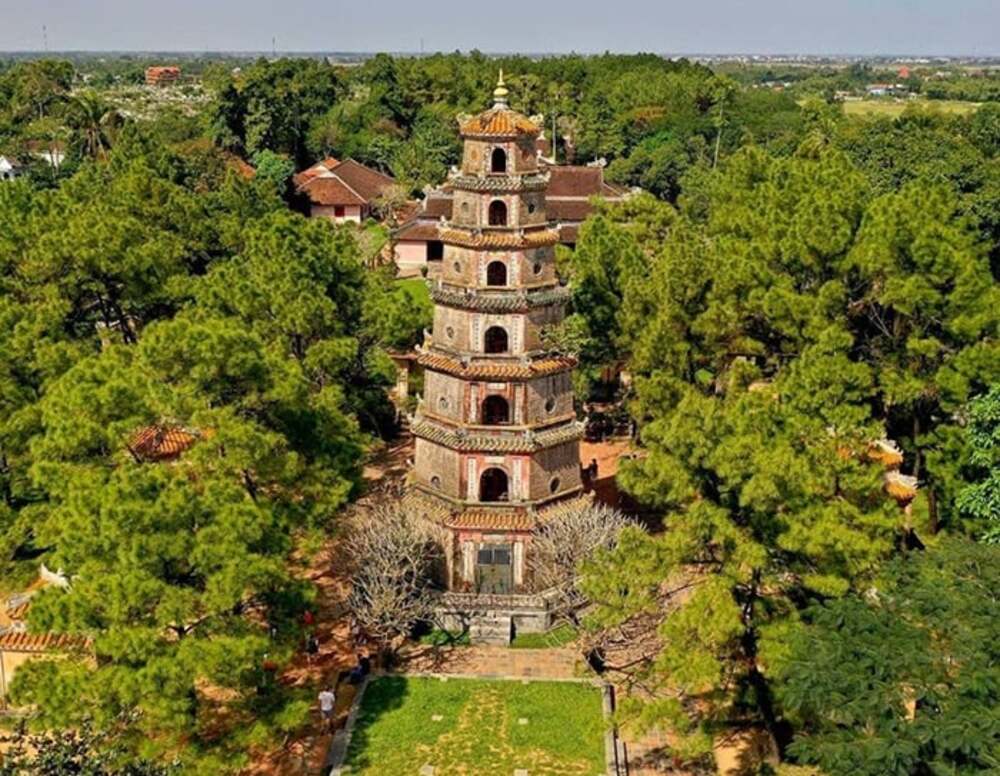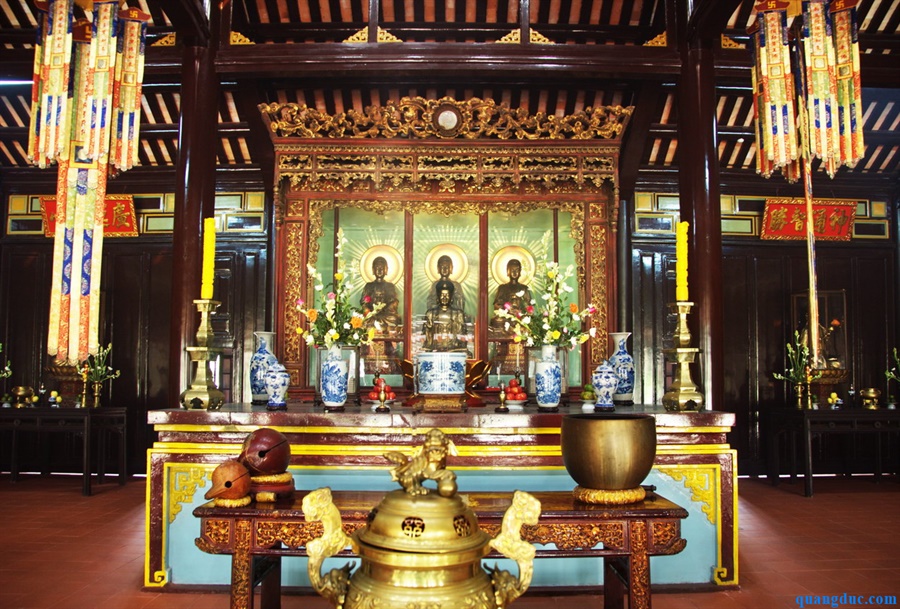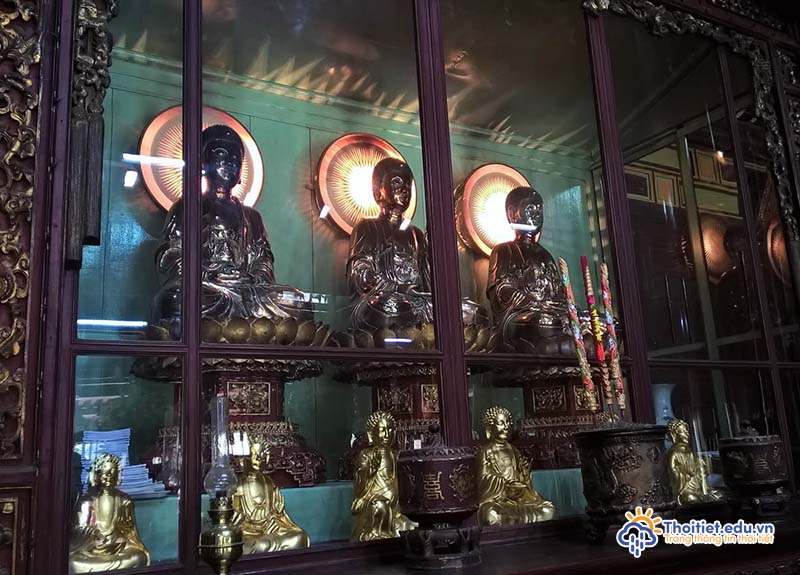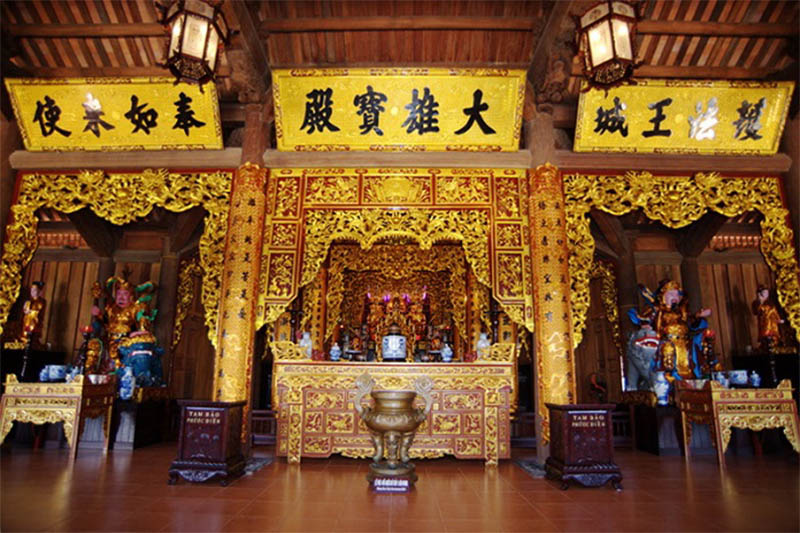Thien Mu Pagoda
1. Overview
Thiên Mụ Pagoda (Vietnamese: Chùa Thiên Mụ) is one of the most famous and historically significant Buddhist temples in Hue, Vietnam. Located on the Hà Khê Hill, on the north bank of the Perfume River (Sông Hương), Thiên Mụ Pagoda has become a symbol of Hue’s cultural and spiritual identity. The pagoda is renowned for its majestic setting, historical importance, and unique architectural features, making it a must-visit destination for both spiritual pilgrims and tourists alike.
2. Historical Background
Thiên Mụ Pagoda was first constructed in 1601 during the reign of Chúa Nguyễn Hoàng, the founder of the Nguyen Dynasty in central Vietnam. According to legend, the emperor was told by a mystical woman, a fairy known as the “Lady of Heaven,” that the pagoda would bring prosperity to the region. This prophecy led to the construction of the pagoda, and it quickly became a center of Buddhist worship and education.
Throughout its history, Thiên Mụ has undergone several renovations, with notable expansions during the Nguyễn Dynasty and in the 20th century. The pagoda has been an important site for Vietnamese Buddhists and is closely linked to Hue’s royal history.
3. Architectural Features
Thiên Mụ Pagoda is renowned for its distinctive architecture that blends traditional Buddhist design with the natural beauty of its surroundings. Key features of the pagoda include:
-
The Phước Duyên Tower: The most iconic feature of the pagoda, the Phước Duyên Tower stands at 21 meters tall with seven stories, making it one of the tallest Buddhist towers in Vietnam. Each level of the tower symbolizes a Buddhist concept and holds significance in Vietnamese Buddhism.
-
The Main Hall (Chính Điện): This spacious hall houses statues of Buddha Shakyamuni and various other Buddhist deities. It is the focal point for prayers and rituals at the pagoda.
-
The Stone Lantern: Near the entrance to the pagoda stands a large stone lantern believed to have been erected during the reign of the Nguyen emperors. The lantern is an important symbol of Vietnamese Buddhism and a cultural landmark.
-
The Monastery Complex: Surrounding the main pagoda are several smaller shrines, a bell tower, and a stupa containing relics of monks and Buddhist figures. The pagoda is nestled amidst lush trees and manicured gardens, providing a serene space for meditation.
-
The Perfume River Views: The pagoda’s location offers breathtaking views of the Perfume River and the surrounding landscape, adding to its peaceful and sacred atmosphere.
4. Cultural and Religious Importance
Thiên Mụ Pagoda is not just a tourist attraction, but a deeply spiritual and cultural site. It plays a significant role in Vietnamese Buddhism and is the birthplace of many key religious and philosophical teachings in the country. Its cultural importance includes:
-
A Symbol of Hue’s Spirituality: Thiên Mụ Pagoda is regarded as the heart of Hue’s Buddhist community. It is a center for Buddhist education, and it attracts pilgrims from all over Vietnam.
-
Historical Significance: The pagoda is closely tied to the Nguyen Dynasty, as it was constructed by the first Nguyen ruler, and it played an important role in the royal history of Vietnam.
-
Monastic Life: Thiên Mụ remains an active monastic center, where monks continue to practice meditation, engage in Buddhist studies, and perform religious ceremonies.
-
Religious Ceremonies: The pagoda hosts several important religious events, including the Vesak Festival (Buddha’s Birthday) and the Lunar New Year celebrations, attracting thousands of visitors each year.
5. Visiting Information
-
Location: Thiên Mụ Pagoda, Hà Khê Hill, on the north bank of the Perfume River, Hue, Vietnam
-
Opening Hours: Open daily, typically from early morning to late afternoon
-
Entrance Fee: Free (donations are welcomed)
-
Transportation: Easily accessible by car, motorbike, or boat along the Perfume River. It is about 5 kilometers from the city center of Hue.
-
Recommended for: Pilgrims, history enthusiasts, architecture lovers, and tourists interested in exploring the cultural and spiritual heritage of Vietnam.
6. Conclusion
Thiên Mụ Pagoda is not just a stunning example of Vietnamese architecture and history, but also a vital part of Hue’s spiritual landscape. With its rich history, breathtaking views, and serene atmosphere, the pagoda offers visitors a chance to connect with both Vietnam’s religious traditions and the beauty of its natural surroundings. Whether you are seeking spiritual enlightenment, cultural understanding, or simply a place of tranquility, Thiên Mụ Pagoda is a truly unforgettable destination.





